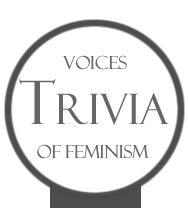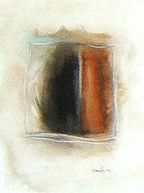Quotidian Love
You say (as your egg breaks
my toast burns the car
stalls and cracked walls
in need of paint close
in) “It’s that kind of day”
and smile that invincible
smile that opens the rose
of morning. Your daily life
is dawning here in mine
in our kitchen and that small
sun suffuses my blues
in softly whitening light.
Bonnie St. Andrews
afterword, February 2006
Deirdre Neilen
Bonnie wrote “Quotidian Love” almost 25 years after we first became lovers. When I read it, I smile remembering a thousand weekend mornings shared in our kitchen where the simple rituals surrounding breakfast often included funny conversations and the pure pleasure of planning our day together.
I write this explication of her poem because she is no longer here to do so. In the euphemistic parlance of grief, I “lost” her to a brain tumor October 21, 2003. We had been together for 27 years, and I can honestly say that not a single day ever went by during all those years without each of us telling the other she was the hoped-for gift of a lifetime. Does that sound hokey? I suppose so, and yet read the poem.
I laugh when I read “your egg breaks” because I know it is actually Bonnie who hated broken eggs and I remember how delighted she was to discover I would quite happily eat the broken egg and not feel in the least put upon. The occasional burnt toast called up for both of us scenes from childhood where parents insisted that charcoal was good for one’s teeth and nothing could be wasted. It took us a long time to decide to give those burnt offerings to the birds and allow ourselves the luxury of a fresh piece.
We met in graduate school; both of us had teaching assistantships in an English department; this meant we had no money. For the first nine years we were together, we owned about six cars, each of which was running-challenged; “the car stalls” meant a long walk home to be followed by creative financing and bartering with Bobby G, our favorite mechanic.
Before we could afford to buy our house, we rented an old cottage on a golf course; it had no insulation in the walls; its one source of heat was an electric wall heater from Sears that made more noise than it ever generated heat. The “cracked walls in need of paint” did require regular attention; since Bon found painting a great way to mull over lines and line breaks, I often arrived home from class only to be blinded by a bright blue kitchen or an orange and yellow bathroom and Bon happily throwing out various adjectives to describe the paint she’d found at some discount house. I can pull out albums and see pictures of us and our friends in dozens of different poses and behind everyone are equally happy walls decorated in colors that flame and dress up the cracks.
“It’s that kind of day” was our credo. With that line, the narrator moves us from the silly irritations of daily life into the poem’s interior and lofty regions. If my smile was “invincible,” it was because of loving her. We were two women whose decision to love each other had caused some minor stir in various quarters, some pain where we had wished otherwise, some confusion and doubt in our families, yet the decision made everything else in our lives possible and rich.
The narrator says it is the lover’s smile that “opens the rose of morning.” Age-old symbol of love and love’s fragility, it is the perfect flower for this poem which seeks to remind the reader that love worth keeping is love worth guarding. Such a love makes possible the “daily life” that dawns “here in mine/ in our kitchen,” and so the narrator assures the lover that they are birthed anew each morning, that their love has the sun’s power to suffuse whatever sadness may arrive in a constant “softly whitening light.”
This poem is about a love that recurs each day, a deliberately chosen love that each day is consciously chosen again. Such a love between women seems to me to be powerful and expansive and still radical. It is two years since her death; many well-intentioned people want me to assure them “it is better now; I am better now; I am okay.” I should say to them as I do here, “Read the poem.” I am bereft; there is no “better.”
about the authors
Deirdre Neilen is associate professor of bioethics and humanities at Upstate Medical University in Syracuse, NY. She is the editor of the university's literary journal, The Healing Muse, and a published fiction writer.
Bonnie St. Andrews was the Distinguished Teaching Professor (SUNY's highest academic honor) of bioethics and humanities at the Center for Bioethics and Humanities, College of Medicine, at Upstate Medical University in Syracuse, NY. Her writings appeared in over 200 journals and magazines including The New Yorker, The Paris Review, Commonweal, Georgia Review, Puerto del Sol, The Gettysburg Review, and Trivia, A Journal of Ideas. Her article on Nelly Sachs in the first issue of Trivia was her first major publication.Her books include Forbidden Fruit: On the Relationship Between Women and Knowledge, Learning from Renoir, and two chapbooks, Stealing the Light and Heal Thyself. Bonnie was the founding editor of The Healing Muse, Upstate's literary journal.
back to top of this page

